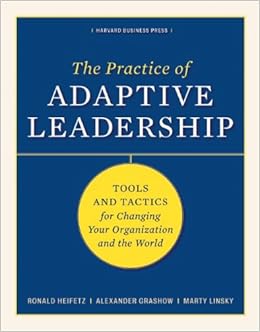by Elmer S. Soriano
It's not easy to teach leadership. The case-in-point method (CIP) developed at the Harvard Kennedy School to teach Adaptive Leadership. The methodology was developed it in the context of teaching 70 graduate students from over a dozen countries who are accomplished leaders in their own right. The types with the background and intelligence to get admitted into Harvard.
"The thesis underlying CIP is that one cannot simply learn how exercise leadership more effectively, particularly in today's increasingly complex and interdependent world, through traditional methods alone. Rather, the challenges of leadership must be experienced in real-time and reflected upon in a classroom laboratory conducive to taking risks and experimenting with new behaviors outside of an individual's current repertoire." (Green, 2011)Can the CIP method be applied to less diverse, less educated cohorts?
At the Civika Leadership Institute we have tried the method in more practitioner-oriented cohorts in the Philippines including Coast Guard junior officers, commissioned and non-commissioned officers from the Marines, university faculty, and civil servants and here is the summary of our insights on the method.
1. Understand complexity through narratives rather than frameworks. The course at the Kennedy School provides over 1,000 pages of grad school readings in the course pack, drawing from references in sociology, psychology, management, the Bible, and many others. The course pack complements Heifetz' books. For our courses, we didn't have the luxury of abstractions with graduate students.
To make the abstract concepts more accessible, many of the key concepts had to be packaged in parables which were then unpacked narratively, rather through scientific paradigms. For example, double and triple-loop learning was explored through the parable of the Frog in the Well, where a frog who grew up in a well changed his worldview the first time he stepped out of the well.
2. Unity rather than dichotomy between content and method. Classroom sessions at the Kennedy School used the CIP method to induce learning of concepts as well as methodology. Some professional teachers we taught got disoriented when the CIP method was woven into discussing content. They were accustomed to learning content separately from methodology.
Field practitioners, on the other hand, did not presume that there had to be a dichotomy between content and process, and they didn't see any inconsistency in melding content with method in the CIP sessions. This doesn't mean, though, that they didn't experience the distress and disequilibruim that comes hand-in-hand with the CIP method.
3. Shorter CIP conversation cycles. At the Kennedy School, CIP sessions lasted 75 minutes each, conforming to class session endings prompted by school-wide bells. In our sessions, we had 2-4 day one-time workshops and we would do big group CIP sessions with frequent "balcony" sessions at intervals as short as every 10 minutes.
4. Prepared frames based on dominant organizational, cultural, or sectoral narratives, as well as primary and secondary identities. Learners come in with narratives and identities. For relatively homogenous groups such as junior Commissioned Officers in the Marines, we took note of their age (late 20s), roles (leader of companies, usually composed of older non-commissioned officers), and life stage (newlyweds, young fathers, or just about to get married), and urgent adaptive challenges (peacemaking amidst potential electoral violence).


No comments:
Post a Comment